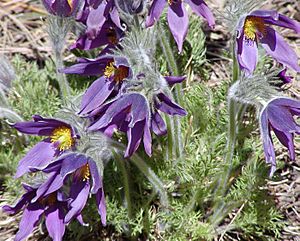Barton Hills, Bedfordshire facts for kids
| Site of Special Scientific Interest | |
 |
|
| Area of Search | Bedfordshire |
|---|---|
| Interest | Biological |
| Area | 118.3 hectares (292 acres) |
| Notification | 1985 |
| Location map | Magic Map |
Barton Hills are a beautiful area located southeast of Barton-le-Clay village in Bedfordshire, England. They are part of the larger Chiltern Hills range. You can find hiking trails marked on maps at the entrance to the hills. A special spring called Barton Springs flows from the bottom of the hills. This spring is the start of a unique river called a chalk stream. In the summer, you might even see Dartmoor ponies grazing on the hills!
Why Barton Hills are Special
A big part of Barton Hills is looked after by an organization called Natural England. They manage it as a National Nature Reserve. This means it's a very important place for nature and wildlife. The area is also known as a Site of Special Scientific Interest, or SSSI. This title is given to places that have special plants, animals, or geology.
The hills have steep, grassy slopes. This type of land is called a downland habitat. It's a special environment for many plants and animals. For many years, there were no sheep grazing here. Because of this, some woodland areas grew on the hillsides.
Barton Hills is famous for a rare flower called the pasqueflower (Pulsatilla vulgaris). In some years, over a thousand of these beautiful purple flowers bloom! You can also find other unusual plants here, like field fleawort and a small type of hairy violet.
Visiting Barton Hills
It's easy to visit Barton Hills. There is some parking available on Church Road. You can also find roadside parking on nearby Old Road. From there, you can use Footpath 4 through the recreation ground or Footpath 1 at the southern end of Old Road to reach the hills.
Barton Gravel Pit
To the east of the main Barton Hills area, you'll find Barton Gravel Pit. This is another nature reserve that is managed by the Wildlife Trust for Bedfordshire, Cambridgeshire and Northamptonshire. It's a great place to see more local wildlife and plants.
Images for kids



